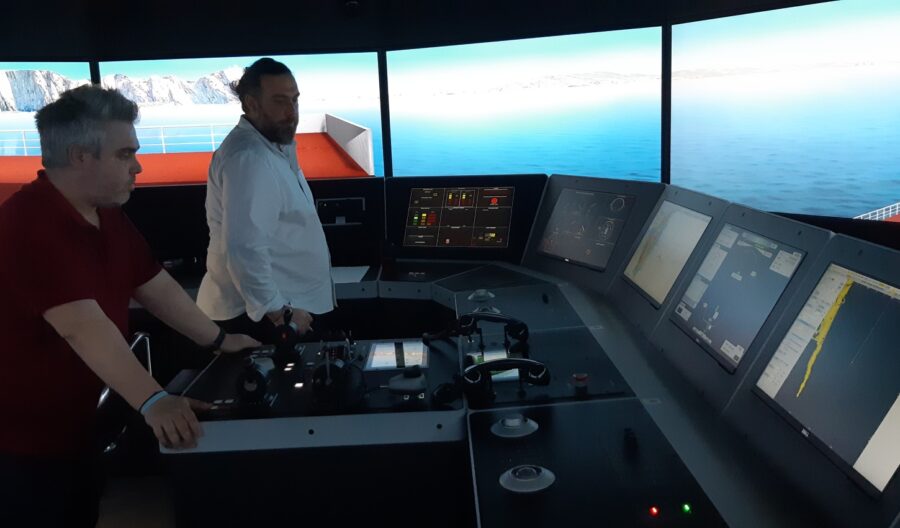OVERALL AIM
It is a practical and theoretical Training Course, aimed at helping the trainees gain experience in handling ships under various conditions, and learning how to more effectively contribute to the bridge team during ship maneuvering.
The Training Course has been designed according to the IMO Model Course 1.22 “Ship Simulator and Bridge Teamwork”. The exercises and demonstrations that are conducted on ship handling simulators constitute the most important and extensive part of the course.
LEARNING OBJECTIVES
The Trainees, on completing the course, will be able to:
- understand the effect of wind, surface currents, shallow waters, banks, narrow channels in different loading conditions to the behavior of the ship,
- understand the sound and efficient bridge procedures and bridge teamwork during watch keeping and ship handling,
- fully understand the meaning of pivot point, squat and Bernoulli effect, and
- effectively undertake to perform approach, anchoring and berthing operations.
FACILITIES
The Training Course will take place at the ATHINA Maritime Learning and Development Center’s K-Sim Full-Mission Bridge – Ship Handling Simulator (Class A-NAV) and in two additional Class C NAV Bridge Simulators. The Full-Mission Bridge Simulator is a 2700 horizontal view, mock – up of a modern bridge equipped with all mandatory instruments for navigation capable of simulating a total shipboard bridge operation situation, including the capability for advanced maneuvering in restricted waters, and a teaching environment required for all applicable STCW A-II competences and all navigation-specific IMO Model Courses.
